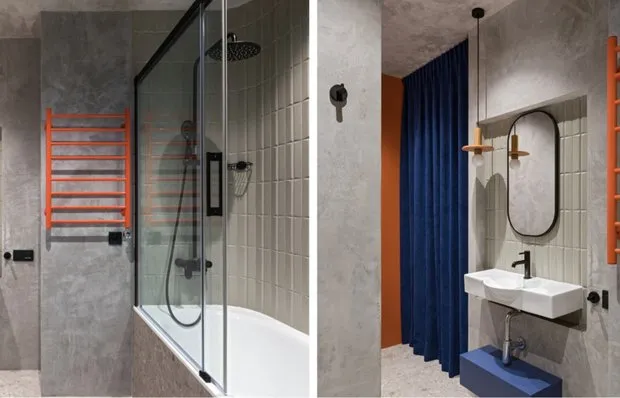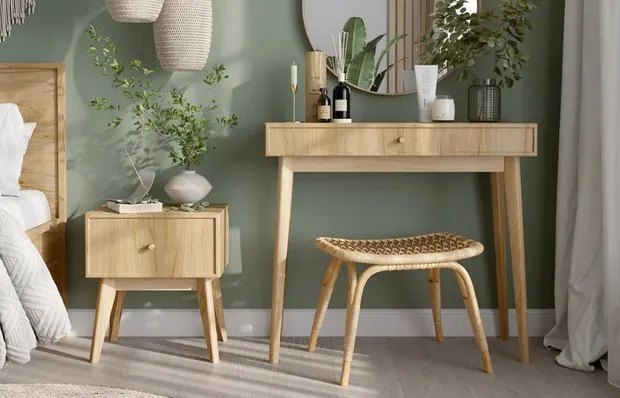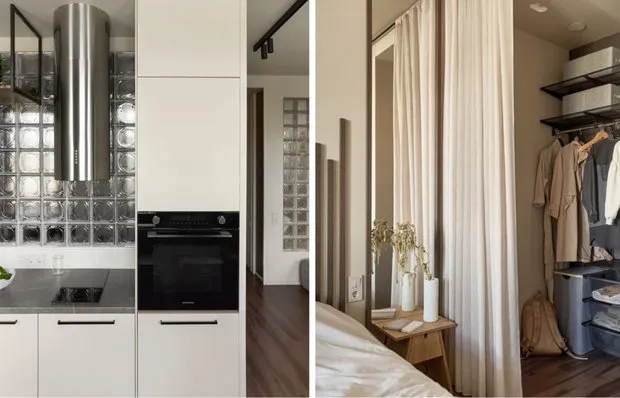There can be your advertisement
300x150
House 2026: How Our Perception of Comfortable Housing Will Change
Apartment is no longer a place to come for a night after work
Apartment is no longer a place to come for a night after work. Over the past few years, the house has become an office, gym, cinema, restaurant and creative workshop all at once. But what will truly comfortable housing look like in a year? Experts already know the answer — and it differs drastically from what we're used to considering as an ideal home.
Main points of the article:
- Flexibility of space becomes more important than area — one and the same corner serves for work, rest and creativity;
- Technology integrates into everyday life imperceptibly, automating routine processes;
- Privacy within the house comes to the forefront — even in a family, personal space is needed;
- Eco-friendliness becomes more than just a trendy word, it's now a basic need;
- The house adapts to different life stages without major renovations.
When the apartment works for you, not against you
The main change in perception of comfortable housing — the home should adapt to the lives of its inhabitants, not dictate their rhythm. Forget about static interiors where every item has one function and stays in its place for decades.
The house of 2026 is a living organism that changes depending on the time of day, season, mood and life circumstances. In the morning, the living room serves as a home gym, during the day it transforms into a meeting space for online calls, and in the evening becomes a cinema for family viewing.
This flexibility is achieved not through constant rearrangement of furniture, but thanks to thoughtful design and smart technological solutions. Every square meter works as efficiently as possible, performing multiple functions at different times.
Invisible technologies as a new comfort standard
Smart home systems no longer remain toys for tech enthusiasts but become a basic requirement for comfortable housing. But the main change — technology becomes invisible. Nobody wants to live in decorations from a sci-fi movie with blinking screens and robot cleaners.
The climate control system automatically maintains optimal temperature and humidity, accounting for weather outside, number of people in the room and even their emotional state. Lighting smoothly changes throughout the day, mimicking natural biorhythms to help you sleep better or wake up easier.
Ideal technologies are those that go unnoticed. The house should anticipate needs without requiring constant interaction with apps and remote controls.
A special trend is systems that learn residents' habits. The house remembers what time you usually have breakfast and turns on the coffee maker in advance. It analyzes your daily routine and automatically switches between lighting modes for work and rest.
Privacy within the family
One of the main discoveries of pandemic years — even in a loving family, everyone needs personal space. Open floor plans remain popular but the approach to organizing private zones within shared spaces is changing.
The trend of 'capsules of solitude' — small isolated spaces measuring 2-3 square meters where one can be alone with themselves. This could be a video call booth, a meditation corner or simply a place to read quietly.
Acoustic comfort becomes as important as visual. The house of 2026 is designed with sound propagation in mind. Play area for children is isolated from workspaces, bedroom protected from kitchen and living room noise.
'Modern family is several generations with different biorhythms and needs under one roof,' explains [designer 2]. 'The house should allow each person to live in their own rhythm without disturbing others.'
Transformable partitions are popular — sliding walls that can divide shared space into isolated rooms or merge them in seconds.

Eco-friendliness as a basic need
Eco-friendly housing ceases to be just a trendy trend and becomes a basic requirement for comfort. It's not only about energy saving and waste recycling but also about indoor microclimate.
Air purification systems are built into ventilation and operate imperceptibly for residents. Sensors monitor CO2, dust levels, volatile organic compounds and automatically activate purification when thresholds are exceeded.
Vertical greening becomes more than a decorative element, but a functional system. Plants are selected not only for beauty, but also for their ability to purify air from specific pollutants. English ivy absorbs formaldehyde, snake plant produces oxygen even at night and spider plant neutralizes carbon monoxide.
A special trend — home mini-farms for growing herbs and vegetables. It's not only eco-friendly but also economically beneficial. Hydroponic systems the size of a small refrigerator provide fresh greens year-round.
A house that grows with the family
The traditional approach of 'buying an apartment for life' is fading away. Modern people change needs every 3-5 years: children are born, grow up and leave, remote work begins, hobbies emerge.
The house of 2026 adapts to these changes without major renovations. A child's room easily transforms into a study when the kid grows up. Wardrobe becomes a creative workshop. Balcony turns from laundry drying area into greenhouse or fitness corner.
The key idea — modularity. Furniture, storage systems and even some partitions are assembled like a constructor. Needs change — reconfigure space for new tasks.
Popular universal solutions: platform bed with storage system that turns into a guest sofa when needed. Kitchen island on wheels that can become bar counter, work desk or additional workspace.
Health as an architectural task
The house of 2026 is designed with consideration for the impact on physical and mental health of its residents. It's not just pretty words, but specific technical solutions based on research by neuro-psychologists and doctors.
Lighting is adjusted to maintain healthy biorhythms. In the morning, cool white light dominates, stimulating cortisol production and helping you wake up. In the evening, the system shifts to warm yellow light that promotes melatonin production and prepares you for sleep.
Color choices are made not only aesthetically but also psychologically. Work zones are decorated in tones that enhance focus, while bedrooms use colors that promote relaxation.
Special attention is paid to ergonomics. Workspaces are tailored to anthropometric parameters of each user. Kitchens are designed with biomechanics in mind, minimizing load on spine and joints.
Sociality in a new format
The pandemic changed attitudes toward hospitality but didn't eliminate the need for social interaction. The house of 2026 considers new formats of communication — from video calls to intimate gatherings in cozy settings.
- Special zones for online communication with carefully planned lighting and acoustics. This is not just a table with a laptop, but a full studio for video calls with good sound and picture quality.
- Guest areas become more flexible. Instead of formal living rooms with sofas arranged around the perimeter, cozy corners are created for different types of communication: intimate conversations, board games, joint movie watching.
- The kitchen returns to its status as the heart of the home but in a new form. It's not only for cooking, but also as a social center where the family gathers to communicate, work and create.
Comfortable housing in 2026 is not about area or expensive finishing. It's about smart use of space, technologies that work imperceptibly and layouts adaptable to changing needs. The main criterion for comfort is that the house should make life easier, healthier and more pleasant rather than create additional complications.
Cover: design project by Zoya Zakalyuzhna
More articles:
 How to Stylishly and Brightly Furnish a 6 sqm Bathroom
How to Stylishly and Brightly Furnish a 6 sqm Bathroom Cheap Stylish Renovation of a Khrushchyovka for 150 Thousand Rubles
Cheap Stylish Renovation of a Khrushchyovka for 150 Thousand Rubles Trendy Furniture: 10 Best Solutions for Your Home
Trendy Furniture: 10 Best Solutions for Your Home Why Your Child Doesn't Want to Do Homework: 7 Mistakes in Organizing a Child's Room
Why Your Child Doesn't Want to Do Homework: 7 Mistakes in Organizing a Child's Room Kitchen of a Khrushchyovka 4 sq.m: How to Fit Everything Necessary
Kitchen of a Khrushchyovka 4 sq.m: How to Fit Everything Necessary How to Visually Raise Ceilings in a Khrushchyovka: Transforming a Soviet-Style Apartment into a Loft
How to Visually Raise Ceilings in a Khrushchyovka: Transforming a Soviet-Style Apartment into a Loft 7 Cool Ideas for a Small Apartment, Inspired by a 36 m² Two-Room Flat
7 Cool Ideas for a Small Apartment, Inspired by a 36 m² Two-Room Flat Combined Bathroom in a Khrushchyovka: How to Do the Repair Yourself and Arrange Everything You Need
Combined Bathroom in a Khrushchyovka: How to Do the Repair Yourself and Arrange Everything You Need